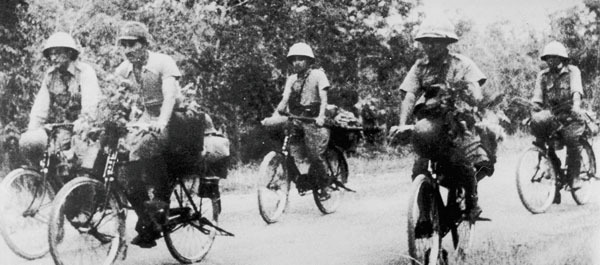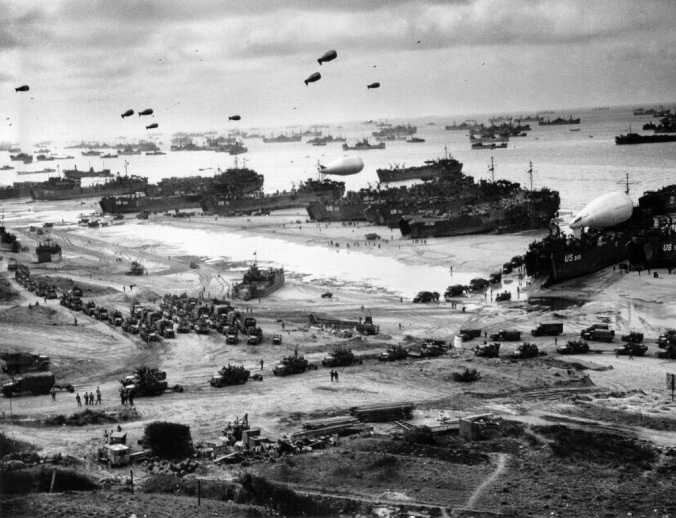I cribbed this off "Angry Staff Officer". Again blame Mac for this one...
There’s one of those old pithy military sayings that is so old that it has been attributed to everyone and no one: “Friendly fire – isn’t.” I’d like to paraphrase that regarding military terrain: “Impenetrable terrain – isn’t.”
Terrain is one of those features of military history and analysis that I feel never gets its full due (although I do highly recommend this work). From tactical combat to sustainment, so much depends on terrain: troop movement speed, line of sight for weapons, ability to move some vehicles into certain terrain, availability of bridging assets for rivers, placement of obstacles, and invasion routes, to name a few.
In the Army, we conduct terrain analysis in our Military Decision Making Process as part of the Intelligence Preparation of the Battlefield. Intelligence and engineer officers work together to create overlays that provide maneuver commanders a snapshot of how the terrain will impact their operations. To translate complex topography into terms that the crayon-eating infantry can understand – kidding, love you all – we classify terrain as unrestricted, restricted, or severely restricted. The latter is classified as terrain that slows mobility to the point as to be practically negligible. Often times, commanders look at the severely restricted terrain and write it off as either useless for them to try to maneuver in or think that the enemy won’t use it. Which is a mistake, as history tells us. Let’s take a look at some times that supposedly severely restricted terrain was overcome by the imagination, ingenuity, and perseverance of military leaders and their troops.
1. Hannibal Gets His Armor Over the Alps
The first of course is the famous Carthaginian general, Hannibal Barca. In 218 B.C., Hannibal decided to take his war with Rome from his home in Africa to the very steps of Rome itself. Rather than crossing the Mediterranean, he took 100,000 troops and forty war elephants on an epic march up through Spain, over the Pyrenees, and into southern France.
Multi-role bridging in an earlier era.
2. Knox Tames the Berkshires
The next example comes from our very own American Revolution. In 1775, the American forces were hanging tough against British-occupied Boston. They had one crucial shortage: artillery. Without heavy guns, George Washington could not expect to mount any type of successful offensive against the British forces who were well entrenched around the city and protected by the powerful guns of the Royal Navy. Thanks to the actions of Ethan Allen and Benedict Arnold in May of that year, the patriot forces did have a supply of cannons and gunpowder at Fort Ticonderoga on Lake Champlain. However, Fort Ticonderoga and Boston were divided by 300 miles of mountains, forests, and rivers. Back before the Mass Pike, there were few reliable roads through the Berkshire Mountains; certainly none that could accommodate the heavy ox trains that would be needed to haul the artillery. Ever the optimist, Washington dispatched his chief of artillery, Henry Knox, to see if the impossible could be made possible. Knox arrived at Ticonderoga on December 5, just in time for the New England winter to set in. Unfazed, Knox started his journey with 60 tons of artillery and equipment.
This was before Dunkin Donuts, which makes it all the more impressive.
3. Swamp? What Swamp? Grant Takes Vicksburg
In early 1863, Ulysses S. Grant was eyeing the key Confederate city of Vicksburg, which controlled the free passage of the Mississippi River. If U.S. forces could take Vicksburg, they could cut the Confederacy in two and curtail enemy supply movements. The problem: Vicksburg was a natural fortress, situated on high ground and surrounded by all sorts of impassable terrain features, such as rivers, swamps, and bayous. To even get at the city without walking right into the Rebel guns, Grant had to find a way to get close enough. He tried all sorts of crazy schemes – such as digging canals through the swamps to try to float the Navy downriver without being under the guns of Vicksburg. But these did not pan out. So Grant devised another way of getting his troops below the “Gibraltar of the West.” His troops would build a 70 mile road through a supposedly impenetrable swamp on the left side of the Mississippi, allowing Grant to move his troops down below the city. He could then cross the river and move on Vicksburg from the south. His men built bridges and corduroy roads – roads made of felled trees – through the swamps, until there was finally a route that could accommodate not only infantry, but their artillery and supply wagons. The Navy – in an ambitious and dangerous nighttime expedition – ran the batteries at Vicksburg, floating down the river while sustaining only light losses.
Once again, the Army conducts a massive amphibious operation sans Marines.
4. Jungles Actually Aren’t Impassable: the Fall of Singapore, WWII
The day following the Pearl Harbor attack, the Japanese launched offensives in Thailand and Malaya. Although British-Indian Army forces were superior in number to the Japanese on the Malayan Peninsula, the British had made a strategic error: they had classified the terrain on the peninsula as largely impassable due to the steaming jungles and jagged hills that characterized much of it. As such, their forces were light on heavy weapons and had very few tanks. The Japanese began a series of offensives, hauling the light mountain howitzers over the hills and snaking columns of their light tanks through the jungles. In this way they were able to outflank and out-maneuver British defensive positions, forcing the defenders to fall back.
Japanese also used bicycles to traverse difficult terrain.
5. Screw your Atlantic Wall, Hitler: D-Day, 1944
At its widest, the English Channel is 150 miles wide; at its shortest, it is only 20 miles wide. And yet, there have only been three successful large-scale invasions across it in military history – subtracting the Vikings, because they went wherever they damn well pleased. The first was in 55 B.C. when Julius Caesar led the first Roman invasion of Briton. The second was William the Conqueror of the Normans who crossed the Channel in 1066 with his army and eventually defeated the Saxons at the Battle of Hastings (As a footnote, the English crossed the Channel multiple times to battle with the French for control of Normandy, with varying results that were eventually unsuccessful – and by eventually, I mean by 1801, because no one does vindictive like the English and French). The next successful cross-Channel invasion was on June 6, 1944. Now that doesn’t mean it hadn’t been tried or thought about before. Napoleon massed barges and ships on the French side of the Channel during the Napoleonic Wars, before eventually scrapping the invasion of England in favor of a dash to Moscow in the winter – a course of action that ended exactly as you would expect. During World War I, the Germans consistently tried to get a foothold on the Channel in order to threaten Britain, but were stymied every time – often in savage fighting. Hitler himself had longed for nothing more than to get his troops onto Old Blighty in World War II, but the heroic actions of the Royal Air Force during the Battle of Britain prevented him from getting air superiority for an invasion. The Royal Navy never lost their grasp on the Channel, which also helped. Like a sulky child, Hitler determined that if he couldn’t have England, then England could never get back to France. He consequently invested a massive amount of time and money into building an extensive network of coastal fortification along the English Channel, dubbed the Atlantic Wall. He then gave it over to his most trusted general, Erwin Rommel, for defense. The Germans expected an attack to be aimed at Calais, at the shortest part of the Channel, although Rommel did make preparations for an attack on the Normandy coast.
“What Atlantic Wall? This is the Atlantic Parking Lot!”
6. Never Underestimate Crazy People who are Willing to Haul Artillery over Impassable Mountains
This is a maxim that I’m going to claim that I’ve invented, but it has been in practice since the very beginning of warfare. When you’ve got people willing to use ropes and chock blocks to slowly pull heavy weapons over the mountains in order to strike a blow, begin worrying. Because it means that you’ve got a very determined foe. The French didn’t realize this at Dien Bien Phu in 1954, thinking that their base in French Indo-China wasn’t vulnerable to Viet Minh artillery. The Viet Minh proved them wrong by slowly and secretly moving guns into place in the mountains around the base. When the Viet Minh launched their attack on Dien Bien Phu in March of 1954, their attacks were supported by devastating artillery fire. The French were unable to conduct effective counter-battery and Dien Bien Phu was eventually overrun, in a disaster for the French.
NVA artillery in action, 1967
Fast forward to the next century, and the U.S. military was once again in combat in a mountainous terrain – Afghanistan. In an effort to place U.S. troops in the line of advance of enemy troops, they constructed combat outposts in these mountainous regions, such as the Korengal and Pech River Valleys. In a pattern we now recognize, the Taliban dragged heavy weapons up steep slopes and over goat trails to target U.S. outposts in the valleys below. Mortars, rockets, and DShK heavy machine guns were used to barrage U.S. positions. American patrols, air strikes, and artillery fire continuously probed for these weapons emplacements in an effort to protect the combat outposts.
These fall in the "Never say never" category!
ReplyDelete